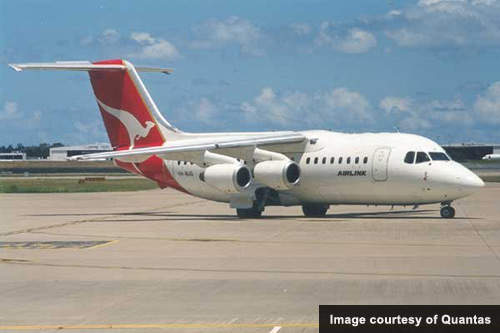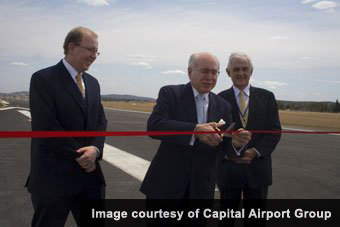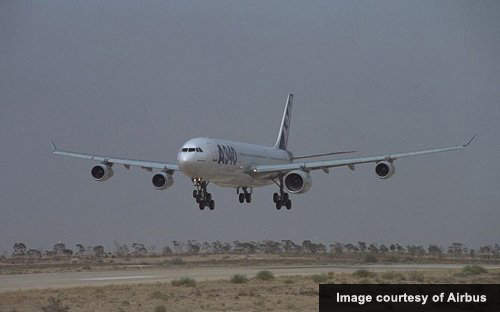Canberra International Airport’s long-anticipated redevelopment began in July 2008, with a A$250m programme of works – the largest in the facility’s 81-year history – which was was delivered in two phases. The first was completed in November 2010, with the second due to finish by 2012.
Together they are intended to provide a bigger incentive for overseas carriers and make the airport one of the most modern and user-friendly in Australia – if not the world. This cachet, coupled with a massive expansion which will see car parking almost double and lounge capacity quadruple – up to 6,000m² – is widely seen as furthering Canberra’s ongoing attempt to be seen as an alternative to Sydney Airport.
The airport is privately owned by local businessman, Terry Snow, with Canberra International Airport being the lessee company and the Capital Airport Group (CAG) responsible for the airport’s management. Canberra International was recently named Capital City Airport of the Year for the second time in five years.
Canberra upgrade project
Canberra Airport is being upgraded under a four-year programme scheduled during 2009-2013 at an investment of $420m. The southern concourse completed as part of the upgrade was opened in November 2010 and the foundation stone for the western concourse was laid in August 2011. New airport parking apron with an investment of $14m was started in April 2009.
During the course of the project, terminal space will be virtually doubled, lounge space will expand to four times its present level, the number of check-in counters will rise from 16 to 32, while baggage-handling capacity will increase three fold. In addition, two new aero-bridges will be installed – taking the total to six – and the airport’s car parking capacity will grow to 2,500 from its current 1,300. Aside of the programme to upgrade the terminal, a major series of improvements are also to be made to the main runway.
The new terminal has been specifically designed to meet two key objectives – catering for future growth in the region, while improving the user’s experience of travel. To make this a reality, the check-in and departure areas will be spacious to allow passengers to move about the terminal in comfort, while high levels of visibility will allow travellers to spot the location of check-in counters, departure lounges and aircraft with ease. The western concourse will deliver a 3,000m² building area and five additional aerobridges.
Environmental concerns have also been addressed in the overall scheme. Recycled materials will be used in the terminal’s construction. It will have an in-built water recovery system and feature a tri-generation plant enabling carbon dioxide emissions to be slashed by three-quarters.
Drawing the excess heat from an embedded natural gas electricity generator, the terminal will be kept warm in the winter and cooled during the summer, while achieving a massive reduction in its greenhouse gas output – and carbon footprint.
Qantas will be the biggest tenant – and in the interim they will spend A$10m on improvements to relieve peak-hour congestion – including expanding check-in facilities, providing an additional security lane and improving the baggage handling system.
This new project is the latest in a series of improvements made to increase the airport’s capacity and facilities, with more than A$220m having already been invested over the last five years. The runways have been upgraded and widened to accept large wide-bodied aircraft, there have been major apron extensions, improvements to the access roads, new precision approach lighting installed, a taxiway upgrade and a turning node constructed suitable for large aircraft.
The future of Canberra Airport
CAG believe that the airport forms the only serious alternative to Sydney’s Kingsford Smith – particularly as Sydney’s airport moves towards reaching capacity. With advantages including few residents under the flight paths, no curfew, relatively straight flight tracks and minimal slot constraints, by 2023, the company feels confident that Canberra International will be drawing a significant number of additional passengers.
Less than three hours drive from the centre of Sydney – and the only other airport in the area able to handle regular large passenger jet aircraft – Canberra looks like the best hope for easing both capacity restrictions and the noise burden for Sydney’s residents.
In addition, a substantial amount of the freight traffic using Sydney – predicted to rise to a total of over 35,000 flights a year by 2023 – could also be successfully accommodated.
Forecasts of the future development and population growth in the region suggest that the Sydney – Southern Tablelands – Canberra Corridor area will see increasing residential and commercial expansion. With a larger potential customer base lying roughly equidistant between Sydney and Canberra airports, CAG see the idea of establishing Canberra as the future regional hub for NSW and the southern domestic hub for Australia as the way ahead.
Airlines currently operating from Canberra include Qantas, QantasLink, Brindabella Airlines and Virgin Blue. A service to Fiji operated for a time in 2004, but there are no international flights to the airport at present.
CAG anticipate that the new terminal will generate renewed interest from international carriers, with New Zealand and Singapore appearing to be the most likely destinations, although Dubai and Hong Kong might also be possible in the future.












